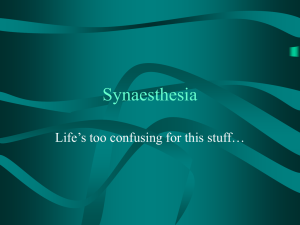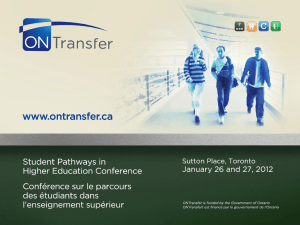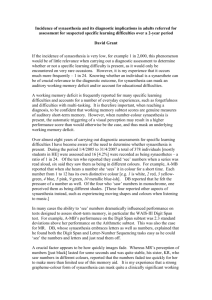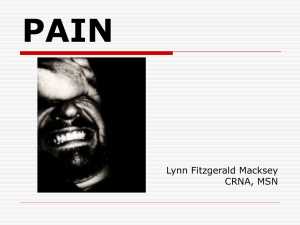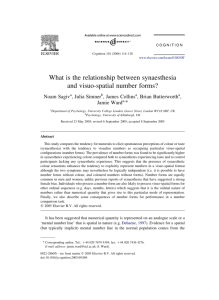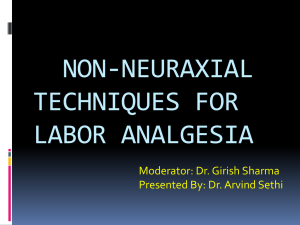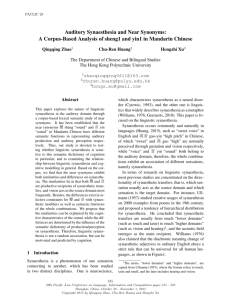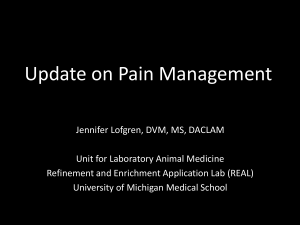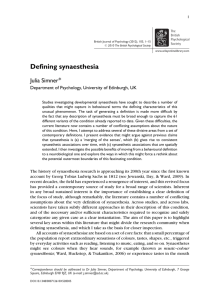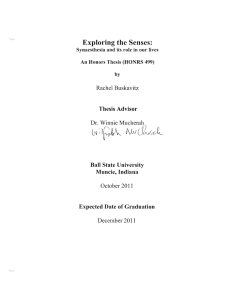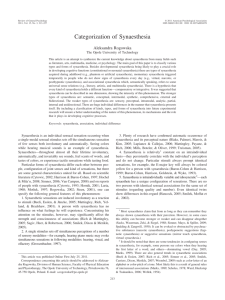Systematic Neurophysiology
advertisement
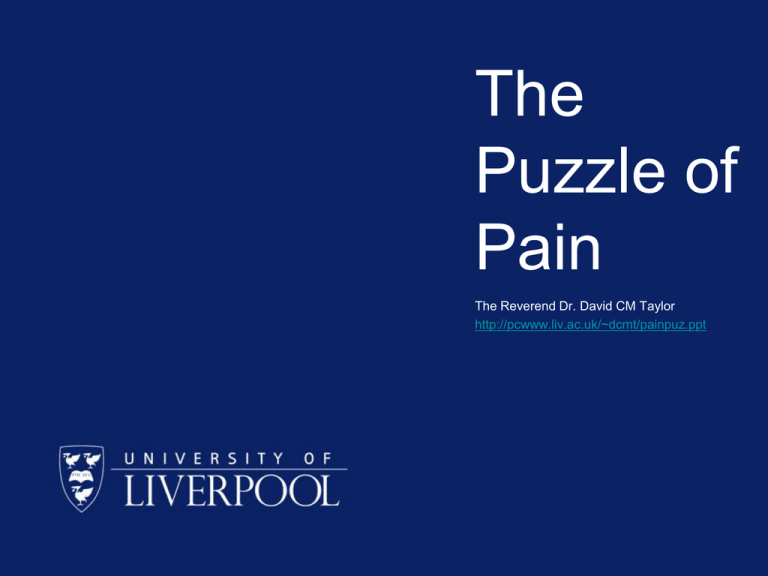
The Puzzle of Pain The Reverend Dr. David CM Taylor http://pcwww.liv.ac.uk/~dcmt/painpuz.ppt Synopsis • We will have a brief overview of different types of pain, including what is meant by first and second pain, and the neural pathways involved. • We will discuss the recent understanding of the genetics of pain, and synaesthesia. • We will then discuss control of pain, through the Gate Control hypothesis, and descending control generally. • This will lead us to consider the differences between pre- and post-synaptic inhibition. “The Puzzle of Pain” We believe in electricity • • There was a long fight between those who believed in chemicals and those who believed in electricity Both were right but, to send the information along the nerve Na+ channels open, and let +ve ions into the cell, which is then “excited” K+ channels open and let +ve ions out of the cell, which is then “inhibited” Ca2+ channels “control” the duration of excitement. • • Think of a Mexican wave And chemicals are released at the end. “Tell me where it hurts…” Image of pain pathways removed for copyright reasons. Spinothalamic tract and spinoreticular/intralaminar pathways There is more than one .... First Second pin prick, heat tissue damage Pathway A mechanical mechanical/heat spinothalamic Distribution Body Surface C and A polymodal spinoreticular intralaminar thalamic Most tissues Reflex Phasic contraction Adequate stimulus Sensory unit Tonic contraction Gate Control Theory Melzack and Wall in 1968 rubbing injured region decreases pain sensation detail wrong but useful Descending control Touch fibre _ + + Gate cell Pain fibre _ Transmission c ell _ + _ Descending Inhibition Touch cortico-thalamic pathways why we don’t feel clothes Pain battle and sporting injuries, ecstasy children, animals, elderly/suffering There is a lot to understand • Particularly interesting, though, are the people who can’t feel pain, and the people who feel too much • Some of the people with chronic pain have a problem with a potassium channel subunit which is the product of a single gene KCNS1 • Some people with low sensitivity to pain have a problem with a gene which codes for part of the Calcium channel α2δ3 Synaesthesia Interestingly most people with an abnormality in α2δ3 also experience synaesthesia Problem? • The genes were identified by groups who started with the fly hot-plate test • And then went on to test the results in animals • Before checking on people. Descending control of pain microinjection of opiates into discrete regions of the CNS (PAG,limbic system, SG) produces analgesia Microstimulation there also produces analgesia Opioid peptides are present there Electrical stimulation of the PAG or NRM produces analgesia “Tell me where it hurts…” Image of pain pathways removed for copyright reasons. Spinothalamic tract and spinoreticular/intralaminar pathways Proposed mechanism limbic system periaqueductal grey nucleus raphe magnus interneurones in lamina II of spinal cord Presynaptic hypothesis 5HT from brain enkephalin substance P fibre pioneered by Leslie Iversen to brain How might control work? Electrical (“Sherringtonian or…”) Shorter action potentials, Altered levels of “second messengers” less Ca2+, less transmitter release, less activity Chemical Alter gene expression Change level or type of transmitter released or Receptors on post synaptic cells Post-synaptic hypothesis from brain A fibre touch c-fibre “pain” to brain This is the currently accepted “gate control” theory
